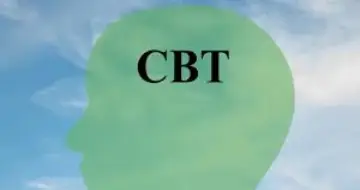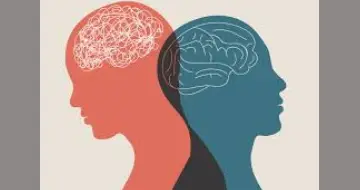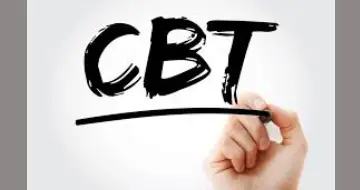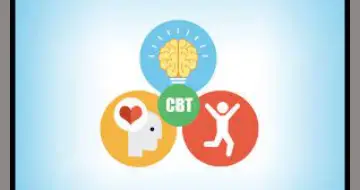IIRF Online > Personal Development > Personal Transformation > Cognitive Behavioral Therapy (CBT) > Cognitive Behavioural Therapy (CBT) Practitioner Course
Cognitive Behavioural Therapy (CBT) Practitioner Course by Udemy
Become a Certified Cognitive Behavioural Therapy (CBT) Practitioner and elevate your understanding of human behaviour.
Course Highlights
- Cognitive psychology: An analysis, evaluation, and comparison of major ideas.
- The course will examine both personal characteristics and individual differences.
- The application of cognitive psychology to everyday events and challenges.
- Perception is not reality, although many people incorrectly believe that it is.
- Self-awareness as a key to all personal development and social effectiveness.
- Adaptability of the mind and the ability to interpret life experiences differently.
- A goal setting method that promotes positive thinking and purpose-driven behavior.
- A practical framework for mind management and effective emotional regulation.
- Simple and effective ways to share what you learn in this course with other people.
- And much, much more.
Skills you will learn!
Curriculum
20 Topics
Introducing the CBT practitioner course
Introducing the wise mind model
Course Support and Frequently Asked Questions (FAQs)
Join the FREE Achology ‘Principles into Practice’ Discussion Group
What is CBT ?
Albert Ellis' Barriers to Effective Listening
An Overview of Cognitive Behavioural Therapy
The Core Assumptions of Cognitive Behavior Therapy
The levels of Human Growth and Development (Part 1)
The Levels of Human Growth and Development (Part 2)
Cognitive Behavioral Therapy's Foundations
A Checklist of CBT Definitions
Connecting Thoughts; Emotions & Behaviour
The ‘ABCs’ of Cognitive Behavioural Therapy
The 14 Self-Defeating Beliefs of Albert Ellis (Part 1)
The 14 Self-Defeating Beliefs of Albert Ellis (Part 2)
The Psychology of Destructive Behavior
Looking Closer at Perceptual Variances
The Perception Quiz (How we see things differently)
The Map is Not the Territory
21 Topics
Piaget's Stages of Cognitive Development
The Cognitive Biases of Noam Chomsky
The Cognitive Biases of Daniel Kahneman
The Opposite Ends of Extreme Thinking
A Discussion about Extreme Thinking
A. Beck’s Common Cognitive Distortions (Part 1)
A. Beck’s Common Cognitive Distortions (Part 2)
Self-Reflection Exercise No 1.
Self-Reflection Exercise No 2.
Demonstration: Identifying Cognitive Distortions
The Four Domains of Emotional IQ
The “Drama” Triangle and “Victim’ Mentality
A Holistic Look at the Human Experience
Demonstration: Checking the Congruence of a Client's Goals
"A Revolution From the Inside Out"
The Cognitive Flexibility Concept
Demonstration: Developing Cognitive Flexibility
Shifting the Client's Perspective
People Types: The 'Chris' Principle
A Standard for Effective CBT Practice
Four Types of Learning Styles & End of Section Summary
19 Topics
A Look at the Johari Window
Current Situation - vs - Ideal Situation
What Is the Foundation of Your Life?
Circle of Concern - Versus - Circle of Control
The AMAP CBT Thought Management Workbook
Neisser's Five Levels of Self-Awareness
Facilitating Cognitive Change in Six Steps
The A B C D E of CBT (and REBT)
CBT for Challenging Emotionally Fuelled Thoughts
Demonstration: Working through the A B C D E Model
The Socratic Questioning Process
Demonstration: Socratic Questioning
Cognitive Restructuring: Putting Thoughts on Trial
The STOPP Card Strategy
The 'Lazarus' Technique
Understanding the Natural Order of our Emotions
Attributes of an Effective CBT Practitioner
The Decision Choices of Maturity and Character
End of Section Three Summary & Wrap Up
22 Topics
Introducing the Belief Development and Modification Section
An Overview of Classical Conditioning
An Overview of Operant Conditioning
Growth Mindset - Versus - Fixed Mindset
The AMAP Core Beliefs Workbook
The Timeline of Belief Development
Taking a Closer Look at Limiting Beliefs
The Kuhn Cycle of Progress
The Pygmalion Effect (Self-Fulfilling Prophecy)
How Self-Defeating Ideologies Are Formed
Introducing The Limiting Beliefs Demonstrations
Demonstration: Questioning Limiting Beliefs
Questioning Limiting Beliefs: Demonstration Deconstruction
Demonstration: Parental Timeline Reimprinting Questions
Parental Timeline Reimprinting Questions: Demo Deconstruction
Introduction to Timeline Interventions
Demonstration: Timeline Interventions
Self-Reflection Exercise No 3.
The Core Identity Model TM
Hans Eysenck's Model of Personality
The 'Good-Enough' Principle
End of Section Four Summary & Wrap Up
9 Topics
Introducing the Personal Values Section
Fear: The Sabotager of Our Best Intentions
Schwart's Theory of Basic Human Values
Abraham Maslow's Hierarchy of Needs
The Adapted Version of Maslow's Hierarchy
The AMAP Personal Values Workbook
The Complex Web of Personal Values (Part 1)
The Complex Web of Personal Values (Part 2)
End of Section Five Summary & Wrap Up
15 Topics
Introducing the Communication Skills Section
The Differences Between Advice; Guidance and Counselling
Levels of Connection in Relationships
The Barriers to Healthy Communication
Seven Essential Active Listening Skills
Demonstration: Active Listening Skills
Top Tips for Communicating Effectively
The Four Natural Stages of Communicating
The Three Levels of Listening
The Perceptual Repositioning Process
Demonstration: Perceptual Re-Positioning
The Seven Different Types of Question
Solution Focused Questions that Work in Any Conversation
Chunking Up and Down: The Hierarchy of Ideas
Demonstration: Chunking Up and Down
16 Topics
An Introduction to CBT Goal Setting
The Four Different Types of Goals
The Seven Deadly Sins of Goal Setting
Defining Your Greatest Life Vision
The AMAP CBT Goal Setting Workbook
S.M.A.R.T Goal Setting
The Life Purpose Workbook
The Eisenhower Productivity Matrix
Evaluating the Congruence of a Goal
Demonstration: Evaluating the Congruence of a Goal
Demonstration Deconstruction: Evaluating the Congruence of a Goal
The AMAP Action Planning Template
Gerard Egan's Skilled Helper Model
Course Recommended Reading List
End of Course Summary & Closing Thoughts
ACCESS YOUR CERTIFICATE HERE

Cognitive Behavioural Therapy (CBT) Practitioner Course




